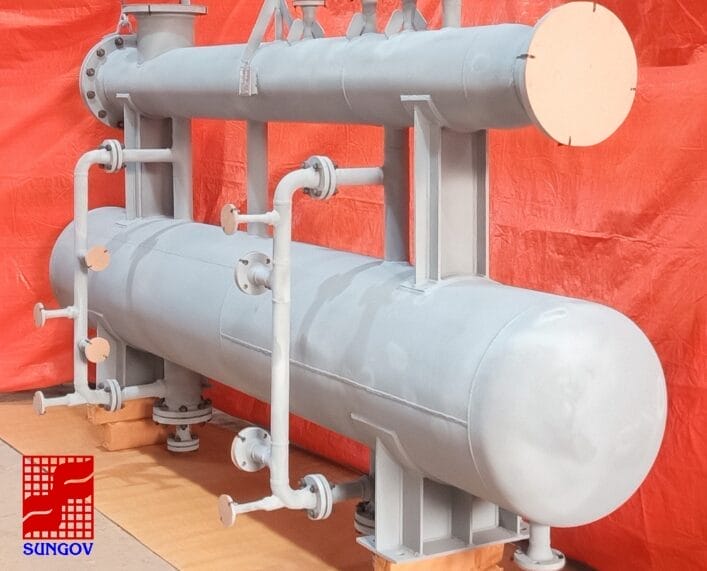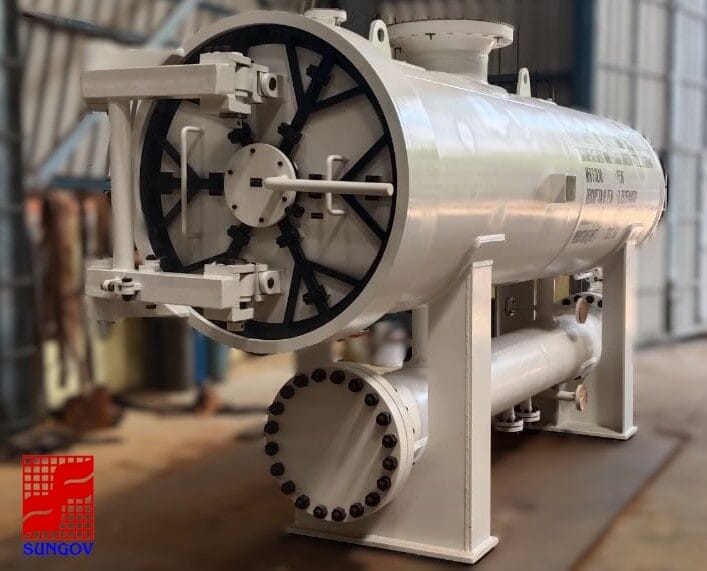Choosing between a vertical filter separator and a horizontal filter separator is not just a matter of flipping a coin to decide. And if you have ever faced this decision then you know well. Both these types of separators play a crucial role in removing contaminants from gas streams—but they are not one-size-fits-all. The orientation of the vessel can significantly influence your system’s performance, efficiency, and even maintenance needs.
So, how do you decide which is the better fit for your operation? As you read this blog you will get to know the filter separator comparison across key criteria—performance, footprint, maintenance, cost, and more. All this will go a long way to help you make an informed choice.
Understanding the Basics
Before diving into comparisons, let’s understand what these separators do. Both vertical filter separators and horizontal filter separators are two-stage vessels that are designed to remove solids and liquids from natural gas or compressed air streams. The first stage typically involves a filter element that traps solid particles. The second stage uses a mist extractor or coalescing section to remove fine liquid droplets.
So now what is the primary difference between the two? It is orientation. But that simple distinction creates vastly different performance characteristics.
Vertical Filter Separator: When Height is in Your Favor
A vertical filter separator stands tall and narrow. It’s often the preferred option when there is limited horizontal space but no dearth of vertical space—such as offshore platforms or compact skid-mounted systems.
The advantages of vertical filter separator are listed below:
- Smaller footprint: Ideal for tight or urban installations
- Efficient liquid drainage: Gravity helps pull separated liquids to the sump more effectively, reducing re-entrainment
- Better performance in slug conditions: Vertical separators handle sudden liquid surges more gracefully than horizontal units
Where it can come of use:
- Offshore and compact spaces
- Applications with low liquid loads
- Locations with vertical clearance
However, don’t let the sleek, space-saving design fool you. Accessing internals for maintenance can be tricky due to the height. You might need scaffolding or platforms, which can increase service time and labor costs.
Horizontal Filter Separator: Stability, Space, and Simplicity
A horizontal filter separator, on the other hand, lies flat. This makes it a good fit for facilities with ample ground space and low overhead clearance. It’s especially popular in land-based gas processing plants and compressor stations.
The advantages of a horizontal filter separator are listed below:
- Easier access for maintenance: Components are easier to reach, making inspections and cartridge changes less of a hassle
- Higher liquid holding capacity: Great for systems expecting higher liquid volumes
- Stable during transport or seismic activity: Its wide base offers a lower center of gravity
Where it can come of use:
- Onshore processing units
- High-liquid or heavy particulate environments
- Areas with limited vertical space
The disadvantages? A horizontal filter separator tends to occupy more space. If there is a space crunch on your site, then this kind of wide footprint might be a dealbreaker.

Installation and Structural Considerations
One aspect often overlooked is how each separator type affects the installation design. A vertical filter separator usually requires a solid foundation and taller structural support, which can increase both the time and budget needed to set it up. On the contrary, horizontal filter separators can be installed more quickly with fewer complexities—but you’ll need a bigger area to accommodate the length of the vessel.
If you’re designing for harsh environments, the vertical option may need wind bracing or anti-seismic features, especially in taller units. Don’t ignore these engineering requirements as they can impact your total cost of ownership.
Performance in Real-World Conditions
While we have been talking a lot about specs, let us consider the actual performance of the filter separators:
- In cold climates, horizontal filter separators tend to perform better. Their wide surface area allows for easier heat tracing or insulation, preventing freezing
- In applications where mist load is minimal but particulate load is high, vertical separators may do the job more efficiently
- If your process experiences variable or unpredictable flow rates, vertical configurations often provide more consistent separation due to gravity-assisted liquid removal
Maintenance: Which is Easier?
Here’s where many plant operators have a clear favorite: the horizontal filter separator. Its layout allows for quicker inspections, faster element replacement, and safer working conditions—all on ground level. That’s a big win when downtime costs you money.
With a vertical filter separator, you may need ladders or lifts to access the internals. Definitely a factor to consider when planning long-term operations.
Cost Considerations: Upfront vs Lifecycle
Initial costs can be deceiving. A horizontal filter separator is usually cheaper to build and install. But over time, factors like maintenance ease, energy consumption, and downtime could make the vertical filter separator more cost-effective, especially if it handles your process needs more efficiently.
Choosing What’s Right for You
Are you still wondering which separator is best? Here’s a quick checklist for your reference:
- Space available: Got height? Go vertical. Got land? Go horizontal
- Maintenance access: Prefer working at ground level? Horizontal wins
- Liquid load: Heavy mist or slug flow? Horizontal is better
- System pressure and flow rate: Both can handle high pressure, but performance varies depending on design
- Safety and environment: Vertical systems may be better in explosive zones where a small footprint is critical.
At the end of the day, there is no one-size-fits-all. The choice between a vertical filter separator and a horizontal filter separator depends on your system’s unique requirements, space constraints, and operational goals.Got questions? Talk to the engineers at Sungov Engineering—because in the world of gas processing, a well-informed choice is always the best one.
Frequently Asked Questions
The main distinction lies in their orientation: horizontal filter separators are elongated and lie flat, offering a larger gas-liquid interface, making them ideal for handling higher liquid volumes. In contrast, vertical filter separators are upright and compact, saving floor space and utilizing gravity more effectively for liquid drainage.
Vertical filter separators are preferable when horizontal space is constrained, as their upright design occupies less floor area. However, if vertical clearance is limited, a horizontal separator might be more suitable. Sungov Engineering
Horizontal filter separators are generally easier to maintain due to their accessible design, reducing the need for scaffolding or platforms. Conversely, vertical separators may require additional equipment for maintenance access, potentially increasing labor costs.
Horizontal filter separators typically have lower initial costs and are more economical for applications with higher liquid loads. However, vertical separators may offer long-term cost savings in space-constrained environments due to their compact design.




